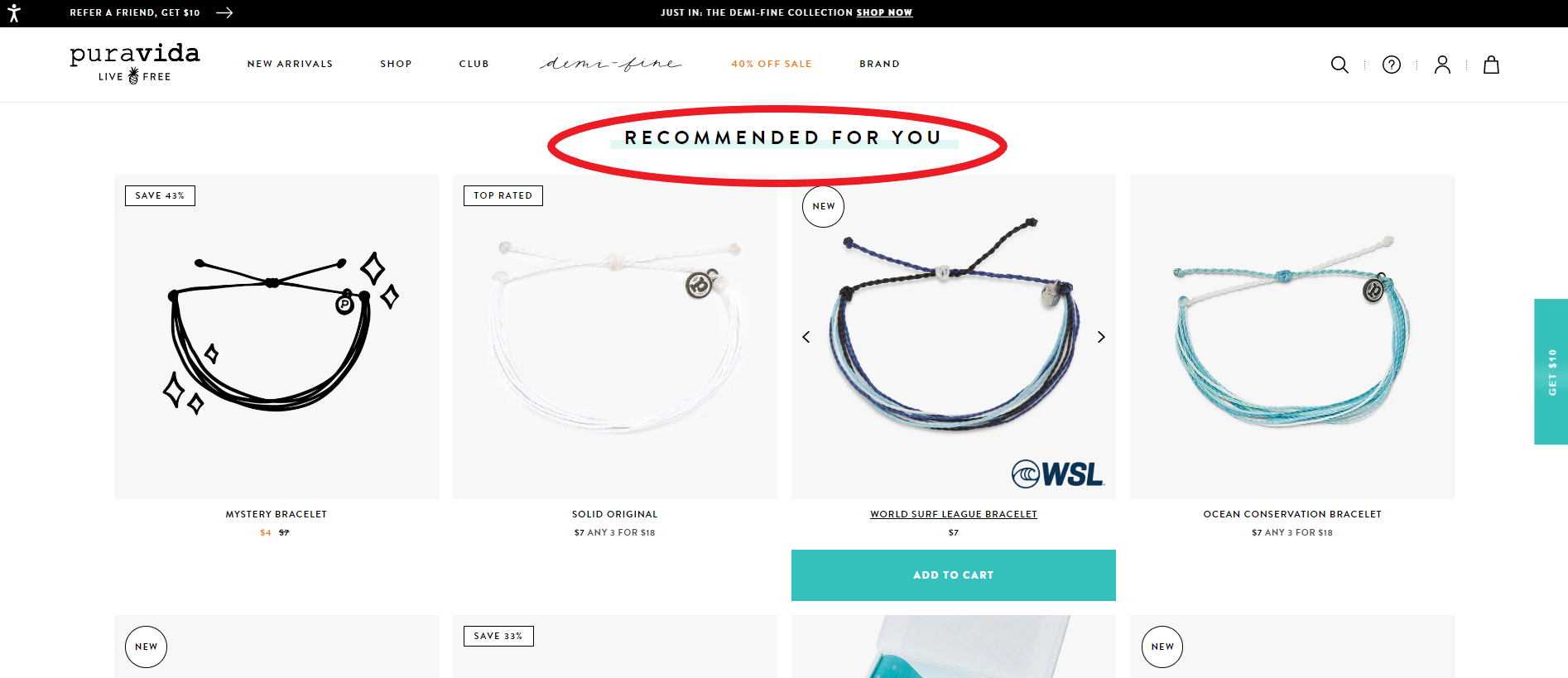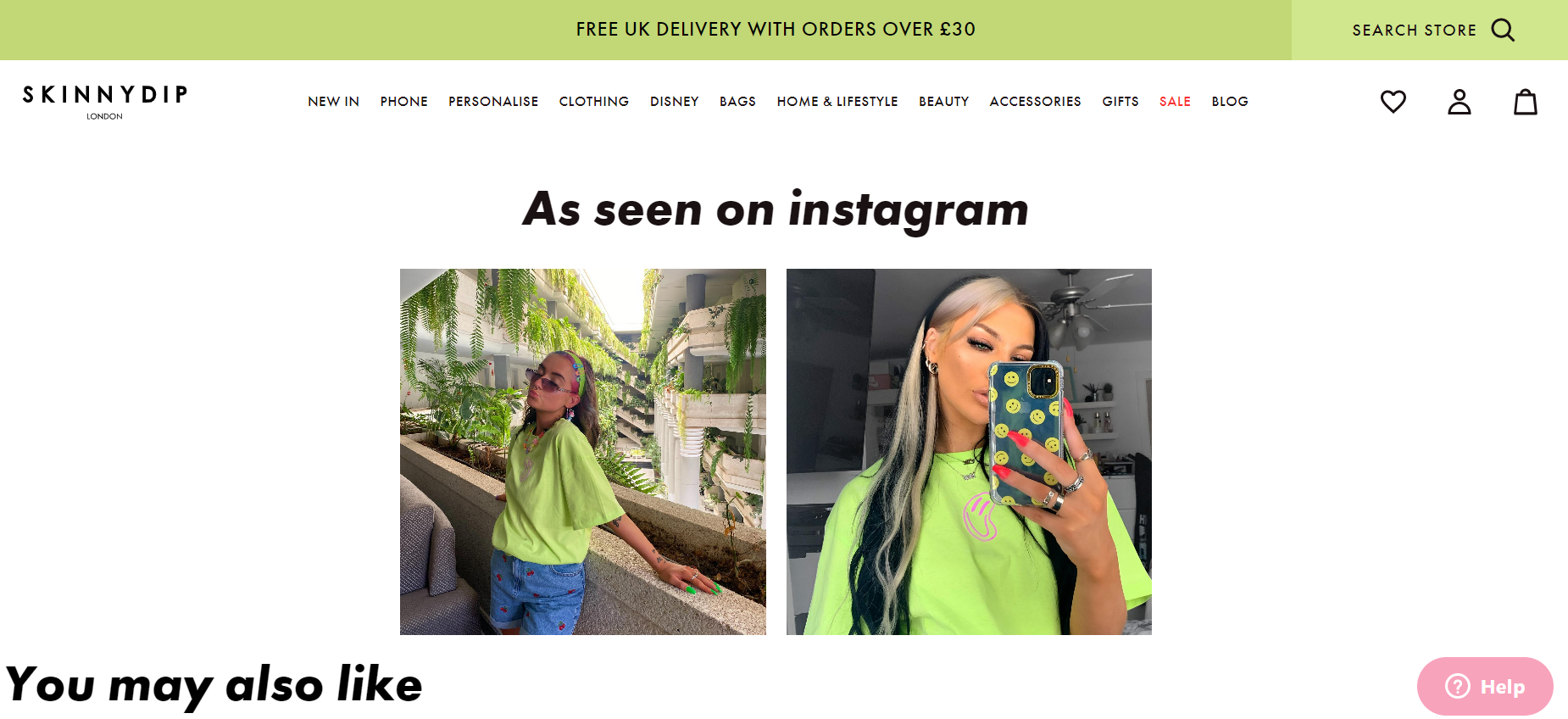
Source: Pixabay
Personalization has emerged as the middle name for many eCommerce businesses. Thanks to giants such as Amazon, the benchmark for eCommerce website personalization has risen ten-fold.
For about 90% of consumers, the amount they spend/shop with a retailer is impacted by how consistently the retailer delivers a personalized shopping experience. So, if you are not hyper-personalizing your eCommerce website, you are already falling behind the competition.
This handy guide will look at the top 5 actionable tips you can leverage to personalize the eCommerce experience and boost your conversation rates through the roof. Let’s get going.
Top 5 Actionable Tips on eCommerce Website Personalization
Problem #1: The ‘Generalized’ Homepage that Caters to Everyone (So No One)
Imagine this scenario: Your website visitor lands on your eCommerce website. They are immediately greeted with thousands of products spread across diverse categories–from footwear and accessories to homecare and clothing.
Do you think your visitor will make a purchase or get overwhelmed and shut the window immediately? Our bets are on the latter.
So, what can we do to prevent this? To start with, track your website visitors with an analytics tool to see what went wrong. Then, move on to suggesting relevant product suggestions.
The solution: Create a personalized homepage with intelligent product detail recommendations.
The end goal of this page is to showcase relevant product suggestions to your customers–as soon as they land on your homepage. You can leverage the following tips:
- Show them similar or complementary products and cross-sell based on their likes and preferences. This will help increase the user’s cart size.
- Upsell with higher-priced items that are similar in style.
Here’s an example of a personalized homepage that demonstrates a “Recommended for you” section and highlights relevant product recommendations based on the visitor’s interests:
The outcome: This kind of personalized and product data-driven homepage strategy improves conversion rates and sales as customers want to keep coming back for more, thanks to the highly-relevant recommendations. It makes them feel special, heard, and, more importantly, ‘understood’ by the brand.
Problem #2: A ‘Disconnected’ Shopping Experience
Here’s another scenario worth considering: Say you have a customer who recently visited the website. Spent considerable time browsing through products and added them to the cart. For some reason, they never completed the purchase.
To their surprise, the customer returns to the site a few days later and sees that the items added to the cart are no longer there. Here’s the first thought they’ll think: “All that effort and time gone to waste.” This is the drawback of delivering a disconnected shopping experience.
The solution: Showcase the ‘Recently Viewed’ items on the homepage.
To ensure that customers have a ‘connected’ experience, eCommerce websites must allow them to pick up the shopping experience from where they left it off.
Take inspiration from Amazon’s “Keep shopping for” section, which showcases the recent items a user has searched for:

Image Source
The outcome: This personalized strategy helps to improve customer retention and drives a continuous shopping experience, boosting the average order value, sales, and conversion rate.
Problem #3: A ‘Standardized’ Product Page with Zero User Recommendations
Another common scenario eCommerce shoppers face is landing on a homepage that’s an endless list of products with no categories or segregated sections. This can make the end user’s online shopping experience chaotic, messy, and sour.
The solution: Personalize the suggestions on your product pages with customized ‘Bestseller Lists.’
If your visitors are new and your brand has no prior history with respect to previous orders, you can always showcase the bestseller items. As the visitor interacts with your site, you can keep collecting their personal information and customize the homepage and product pages for future browsing sessions.
Take a look at the following example by ASOS, which showcases its bestseller items through the “Trending Now” section on the homepage itself:
The outcome: This strategy guides customers along their shopping journey and encourages them to move further along the sales funnel. It helps them to make a clear choice among multiple available options and boosts sales in the process. As the shopping experience becomes more convenient, friction-free, and seamless, it helps build brand affinity, owing to accurate user personalization.
Problem #4: The “Abandoned Cart” Issue
Cart abandonment is an issue that plagues most eCommerce websites. In fact, according to research, the average cart abandonment rate across industries is just under 70% — not a small number by any chance.
The solution: Upsell or cross-sell relevant items at checkout.
Did you know conversions can increase by a whopping 35.26% just by executing the right cocktail of checkout optimization strategies? So what are some of the best checkout personalization strategies you can leverage for your eCommerce website? Keep reading:
- Make it easier for your customers to send gift recommendations to their friends and family with a link to your specific product page:
- Insert an accurate size guide on your product page to boost user engagement and conversion rates.
- Add simple CTAs in the customer’s empty cart page, such as “Shop Men,” “Shop Women,” “Shop recent launches,” etc., to increase user interactivity and keep them on your webpage.
- Upsell or cross-sell relevant products to increase the average order value size.
The outcome: These cart abandonment strategies help retarget in-session shoppers. You can use behavioral triggers to boost sales, such as previous orders, user likes, Wishlist items, etc.
Problem #5: Poor Conversion and Sales
If despite all these efforts, your conversion rates are still in the lower range, it is time to leverage the power of user-generated content on your website. An overwhelming 93% of marketers agree that the content created by consumers outperforms branded content marketing materials.
The solution: Integrate User-Generated Content (UGC) across the funnel.
Customers trust the word of other customers: That’s the plain, simple truth. So why not demonstrate your brand’s offerings to real-life customers and showcase it on your website as Skinnydip London does with its “As seen on Instagram” section:
The outcome: This smart product recommendation strategy humanizes the brand (and its offerings) and makes it relatable in front of the end customer’s eyes. As customers start trusting the brand with realistic content, it helps drive click-throughs and boost the conversion rate.
The Bottom Line
When it comes to eCommerce website personalization, there’s no “one-size-fits-all” strategy that works. You need to understand your customer profile and curate a customized strategy that works for them (and not the other way round). Take a cue from the abovementioned strategies and let your customers revel in personalized product recommendations with every click and every “Add to cart.”







